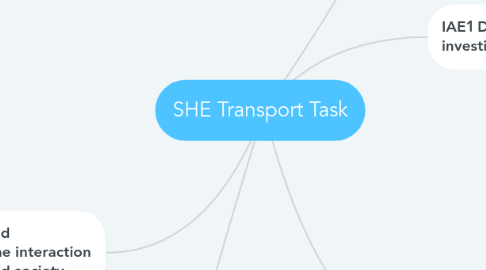
1. KA1 Demonstration of knowledge and understanding of physics concepts.
1.1. describe the propulsion system used by the mode of transport
1.1.1. use relevant physics concepts such as energy transformations, forces, speed, acceleration, energy efficiency and power
1.2. what forces are involved in the transport thing (vector diagram)
1.3. describe a safety feature and the physics behind it
1.4. What formulas can be shown
1.4.1. how does the formula apply to real life
1.4.2. what are the mathematical proportionality involved?
1.4.3. are there any thinks kept constant?...
1.5. Facts, figures and research
2. KA3 Exploration and understanding of the interaction between science and society.
2.1. major factors which led to need
2.2. 'blue sky research'
2.3. links to key concepts
2.3.1. • humans seek to improve their understanding and explanation of the natural world • working scientifically is a way of obtaining knowledge that allows for testing scientific claims • scientific theory can change in the light of new evidence • technological advances change ways of working scientifically • links between advances in science impact and influence society • society influences scientific research • physics is important in sport • emerging physics-related careers and pathways involve science • ‘blue sky’ research leads to new technologies.
2.4. discuss the impact that the change in the technology in this mode of transport has had on society
2.5. justify your conclusion about the technology
2.5.1. its use in the mode of transport researched
2.5.2. how it shows the interaction between science and society
3. KA4 Communication of knowledge and understanding of physics concepts and information, using appropriate terms, conventions, and representations.
3.1. pictures and structural diagrams
3.2. data in charts and tables
3.3. maps
3.4. words in essay form
3.4.1. • Spelling, pronunciation and/or grammar • Sentence and paragraph structure • Appropriate use of physics terminology • Neat and clear presentation • Engaging format • Logical flow

